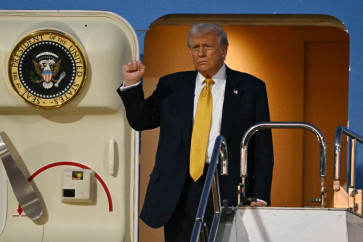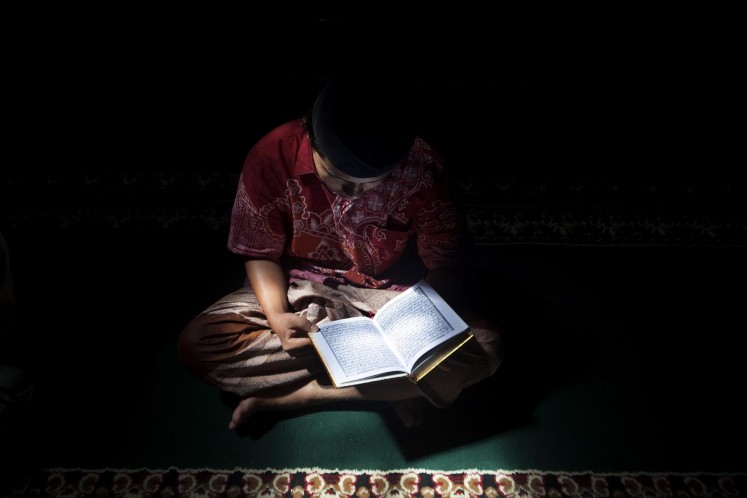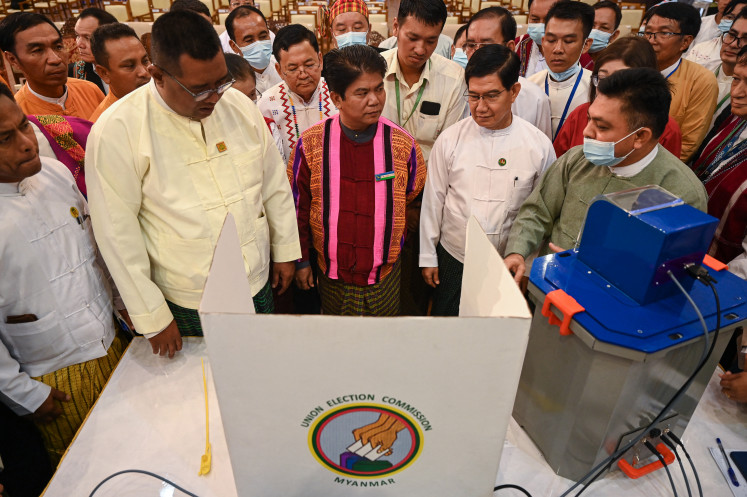Popular Reads
Top Results
Can't find what you're looking for?
View all search resultsPopular Reads
Top Results
Can't find what you're looking for?
View all search resultsPowered by the sun, telcos open up cellphone final frontier
Until this year, 1,000 or so residents of Mambi on Indonesia’s Sulawesi island used their mobile phones as calculators, cameras and music players
Change text size
Gift Premium Articles
to Anyone
U
ntil this year, 1,000 or so residents of Mambi on Indonesia’s Sulawesi island used their mobile phones as calculators, cameras and music players.
But only if they rode up to five hours by bus or motorcycle over muddy roads could they actually use them for their primary purpose: to make phone calls or send messages.
And they’re not alone.
According to a study released in October by the GSM Association GSMA.L, a grouping of mobile operators, 1.5 billion people lack access to a cell phone signal.
This is primarily because cellular operators haven’t considered connecting remote communities such as Mambi worth the cost. But with demand for cell phone services in rural parts of the developing world rising, and the cost of the technology to connect them falling, the equation is changing.
That means rural folk like those in Mambi will form the bulk of some 700 million new cellular subscriptions in the next five years, reckon the GSMA.
“The barrier to entry is no longer the device but the availability of the network,” says Prashant Gokarn, chief strategy and planning officer at PT Indosat, Indonesia’s second largest operator.
This shift has led to a rash of moves by operators to reach beyond the low-hanging fruit of urban subscribers to connect “the unsignalled”.
Driving this shift are small companies like Ireland’s Altobridge, which offers base stations at a fraction of the cost of traditional ones designed for urban environments. They are powered by solar panels, removing the need for regular shipments of diesel to keep them going, and also reduce the load on traffic back to the network — called backhaul.
While installing an urban base station with tower, power and air conditioning in remote areas would cost around US$250,000, says Altobridge’s marketing director Peter Tuomey, his solar powered station costs a fifth that. And the monthly costs are reduced in part by routing local calls back through the base station — rather than sending them over the satellite backhaul.
Not all such technology is exclusive to smaller players such as Altobridge, but their willingness to share some of the risk has helped them carve a niche away from main players like Nokia, Siemens Networks, Ericsson and Huawei.
India’s Vihaan Networks Ltd VNL.L, for example, has deployed hundreds of thousands of such base stations across the developing world. Says founder and CEO Rajiv Mehrotra of his bigger rivals: “We start where they stop.”
In Indonesia, Indosat and Altobridge have jointly installed base stations in nearly 100 sites, including Mambi. That’s only a start: Altobridge estimates 35 million Indonesians — about 14 percent of the population — do not have access to a cellphone network.
But it’s already making a difference.
In Mambi, for example, Altobridge sent one of its engineers, Australian Sean Heffernan, at the beginning of the year to set up two base stations covering a cluster of villages.
He was surprised at what he found: not only was he told he was the first white man many of the villagers had seen, but he observed a relatively prosperous life. Mambi had a paved high street, school and restaurants, all partly funded by thriving cocoa, coffee and rice growing and remittances from relatives working overseas.
But soon after the network was up and running, the change was visible. Residents could phone doctors in the regional capital, Makassar, check market prices of goods they sold like chillies and lemons rather than guess them, and order supplies from town instead of trekking several hours there and back.
“It basically changed their lives,” he said.
That may only be the start. In Indonesia’s far east region of Papua, where base stations have been in place longer, their deployment has been followed by the arrival of bank branches, government services and retail businesses, says Indosat’s Gokarn.
That’s because such services all rely on communications. Djemi Suhenda, deputy president director of Indonesia’s Bank BTPN, said his bank was keen to reach out to such communities, but must first wait for the telephone operators, or telcos.
“As the economy grows, as the middle income grows, these are the future customers of telcos,” he says.
“And for us, it’s simple: we’re a mass market bank and so these are the customers we’d like to see.”
Indeed, research indicates the arrival of a cellphone signal does have an economic impact. A study for Nordic telecoms group Telenor by Deloitte in 2008 suggested that a 10 percent rise in mobile penetration would boost the long-term GDP rate of a developing country by 1.2 percent. Indian researchers came to similar conclusions in 2009.
Key, though, to any wider deployment is going to be whether such moves pay off for operators. Indosat’s Gokarn said that while his company recognizes the benefits of being the first to arrive in a village like Mambi, figuring out pricing is key.
Charge local users too much and you hit “miscall culture” — where users call a distant friend but hang up before he or she answers. That prompts the friend to call back, potentially losing the operator revenue to a rival network.










